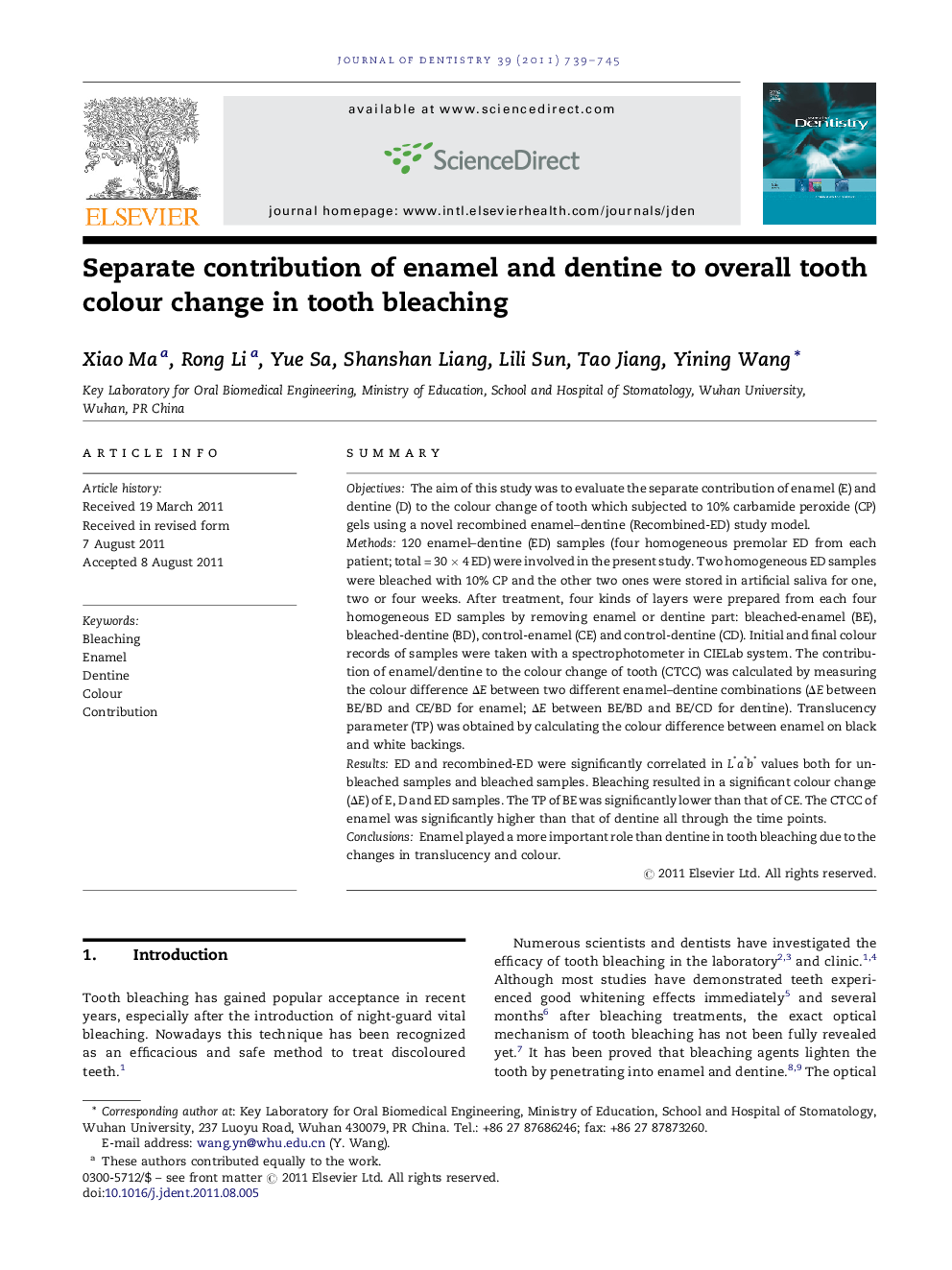| Article ID | Journal | Published Year | Pages | File Type |
|---|---|---|---|---|
| 6053548 | Journal of Dentistry | 2011 | 7 Pages |
SummaryObjectivesThe aim of this study was to evaluate the separate contribution of enamel (E) and dentine (D) to the colour change of tooth which subjected to 10% carbamide peroxide (CP) gels using a novel recombined enamel-dentine (Recombined-ED) study model.Methods120 enamel-dentine (ED) samples (four homogeneous premolar ED from each patient; total = 30 Ã 4 ED) were involved in the present study. Two homogeneous ED samples were bleached with 10% CP and the other two ones were stored in artificial saliva for one, two or four weeks. After treatment, four kinds of layers were prepared from each four homogeneous ED samples by removing enamel or dentine part: bleached-enamel (BE), bleached-dentine (BD), control-enamel (CE) and control-dentine (CD). Initial and final colour records of samples were taken with a spectrophotometer in CIELab system. The contribution of enamel/dentine to the colour change of tooth (CTCC) was calculated by measuring the colour difference ÎE between two different enamel-dentine combinations (ÎE between BE/BD and CE/BD for enamel; ÎE between BE/BD and BE/CD for dentine). Translucency parameter (TP) was obtained by calculating the colour difference between enamel on black and white backings.ResultsED and recombined-ED were significantly correlated in L*a*b* values both for unbleached samples and bleached samples. Bleaching resulted in a significant colour change (ÎE) of E, D and ED samples. The TP of BE was significantly lower than that of CE. The CTCC of enamel was significantly higher than that of dentine all through the time points.ConclusionsEnamel played a more important role than dentine in tooth bleaching due to the changes in translucency and colour.
